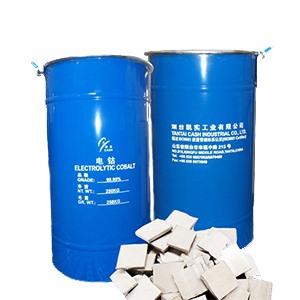Learn about the cobalt extraction process
Cobalt rarely exists alone in nature, and is mainly associated with nickel, copper, pyrite and arsenic deposits. Cobalt mineral resources mainly include sulfide nickel-cobalt ore and cobalt oxide ore, copper-cobalt ore, arsenic-cobalt ore and pyrite. Cobalt smelting has the characteristics of low raw material grade, long extraction process and many extraction methods.
Extraction of cobalt from nickel and copper-sulfur slag: The cobalt-containing slag is subjected to reduction sulfidation and smelting in a blast furnace or electric furnace to obtain cobalt alloy or matte. After magnetic separation and enrichment, pressure acid leaching can make cobalt enter the solution. The solution After purification, cobalt oxalate is precipitated by adding oxalic acid to cobalt oxalate. Cobalt oxalate is a refined cobalt oxide product produced by calcination.
Extraction of cobalt from nickel refining slag: anolyte purification to extract cobalt in nickel electrorefining process is an important raw material for cobalt extraction. Cobalt slag is extracted with reducing sulfuric acid, so that cobalt becomes cobalt sulfate into the solution. Extract the cobalt chloride solution obtained by separation of impurities such as copper, zinc, manganese, nickel, etc., to obtain cobalt oxide products, or obtain metal cobalt products by electrodeposition.
Extraction of cobalt from cobalt-bearing pyrite: the yield of cobalt-bearing pyrite is 0.3 percent and 0.5 percent cobalt pyrite concentrate. The cobalt pyrite concentrate is roasted with sulfuric acid, and the cobalt, nickel, copper and other valuable elements in the concentrate are removed. Converted into soluble sulfate. Cobalt, nickel, copper, etc. are leached out of the calcined solution with water or acid and transferred to the solution. The leaching solution is purified to remove impurities such as iron, copper, zinc, manganese, and then nickel and cobalt are separated to obtain pure Cobalt solution, electrodeposited to obtain metallic cobalt.
Removal of cobalt from arsenic-cobalt ore: Arsenic and As2O3 volatilize after roasting or arsenic-cobalt ore smelting, resulting in calcined sand or cobalt matte acid leaching into the solution, which is then divided into nickel, cobalt, iron, arsenic, copper, zinc, manganese and other impurities are removed. According to market demand, the purified cobalt solution is used to produce metal cobalt or cobalt oxide products.
Cobalt is mainly related to other minerals and has complex components, so there are many cobalt smelting methods and complex processes. Cobalt smelting is generally divided into three steps: first, cobalt is transferred from ore to solution, or into crude cobalt alloy or matte Cobalt is then transferred to the solution; 2 is to remove impurities and purify; the third is to extract metals.
Cobalt smelting technology can be divided into four kinds: wet extraction of cobalt after high temperature smelting and enrichment, sulfuric acid roasting to extract cobalt, reduction roasting ammonia leaching and pressure leaching.


